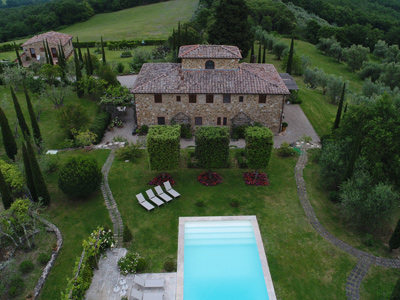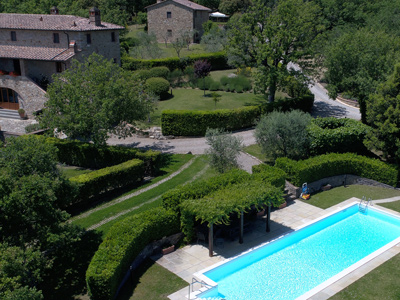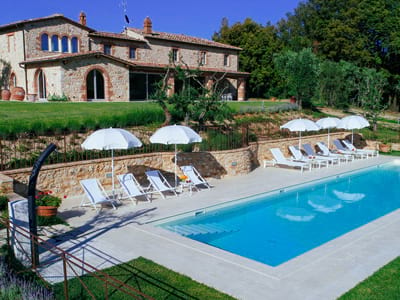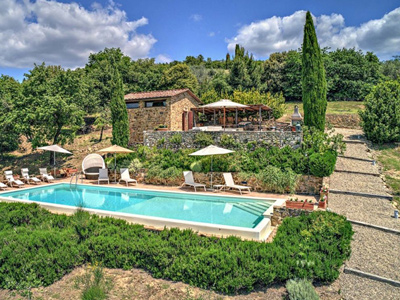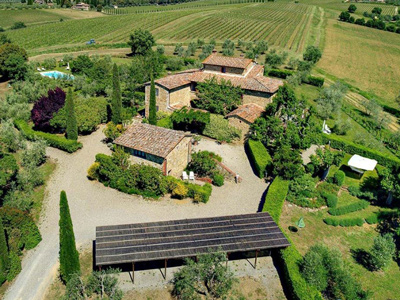TUSCANY DESTINATIONS
Gaiole
Imagine a medieval travel hub and market place on the hills of Chianti in Tuscany; a small town that was a center of activities and a connection point between Chianti and Valdarno already many centuries ago. When using words such as hubs and connection points, it feels a bit like talking about present-day flexible travel patterns, right?
Instead, we are talking about Gaiole in Chianti during the Middle Ages.
At Tuscany Destinations, we can show you all the hidden treasures in and around Gaiole on your dream vacation in Tuscany.
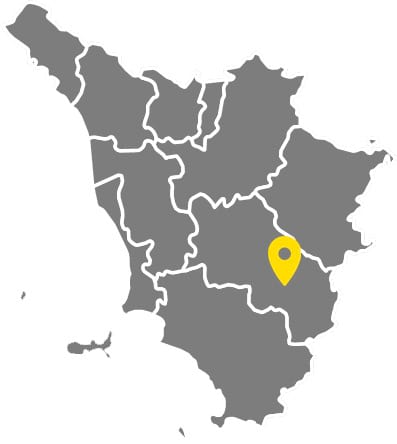
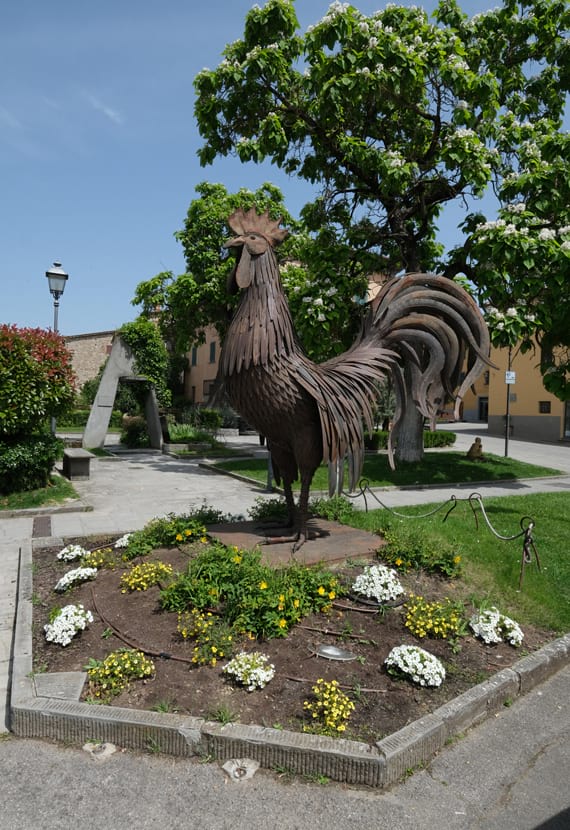
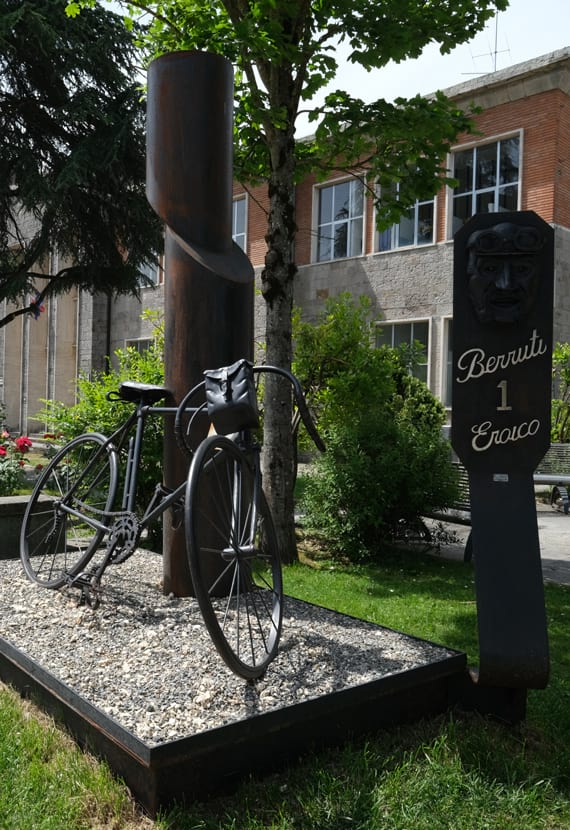
In a previous article, “What is Chianti?”, we talked about the Lega del Chianti and how in 1250 the Republic of Florence took the decision to divide their territory into three different Leghe (districts), to make it easier to defend themselves. Gaiole was one of these three districts together with Radda and Castellina. Gaiole was therefore already in the medieval times an important hub in Tuscany.
The first mention of Gaiole dates back to 1086 in a document that has been found at Badia di Coltibuono. Already in those years, the marketplace in Gaiole was in full swing where the people from the castles nearby met to exchange goods.
Gaiole was, as we have mentioned above, a part of the Republic of Florence and later on the Grand Duchy of Tuscany up until the 19th century, when it was transferred to Siena during the era of Napoleon. Since then, it has remained under the administration of Siena.
What to See and Do in Gaiole in Chianti
There are many wonderful things to explore and see in and around Gaiole in Chianti. Gaiole is located in the middle of the amazingly beautiful Tuscan countryside where life is a bit slower and you can really relax and enjoy your vacation. At Tuscany Destinations, we can create the perfect itinerary for your sightseeing around Gaiole.
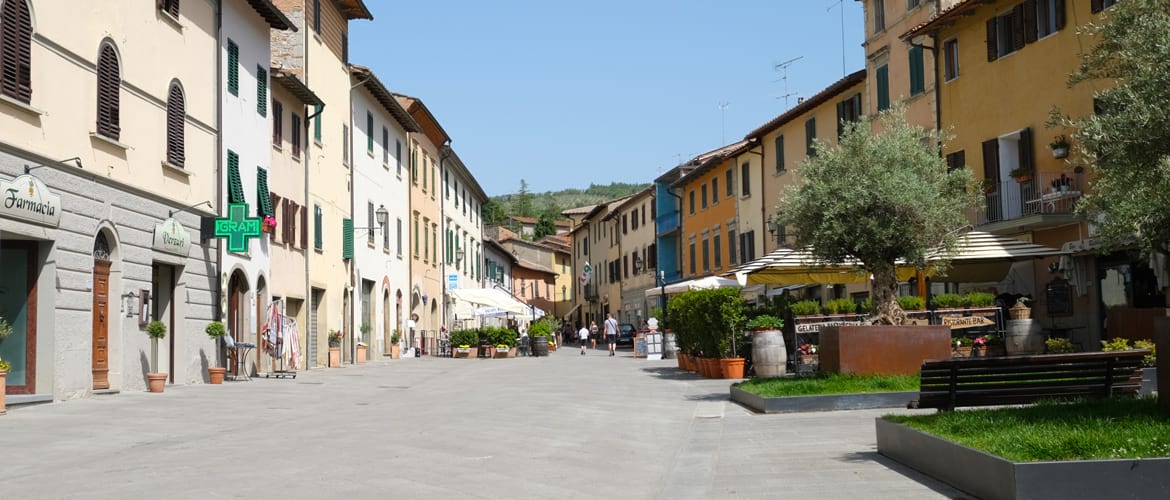
Religious architecture around Gaiole
In the countryside around Gaiole, you can find many parish churches and abbeys that date to ancient times. To mention a few: the church of Badia di Coltibuono that according to the legend was founded by the Lombard Geremia dei Firidolfi and dedicated to San Lorenzo. The Ricasoli family are also considered to be descendants of Geremia dei Firidolfi and the Lombards which brings us to the parish church Pieve di San Marcello that is very much connected to them. There are many other ancient churches to see in the area around Gaiole, you are indeed spoiled for choices.
Hamlets in the countryside around Gaiole
As a bit everywhere in Tuscany, there are many old hamlets and small medieval villages to visit around Gaiole. Here Ama, Montebuoni, Adine, and Poggio San Polo are examples of these kinds of hamlets. At Poggio San Polo there is also the beautiful fortified abbey San Polo in Rosso to visit. Another picturesque place is the village of San Sano that is in the Romanesque style.
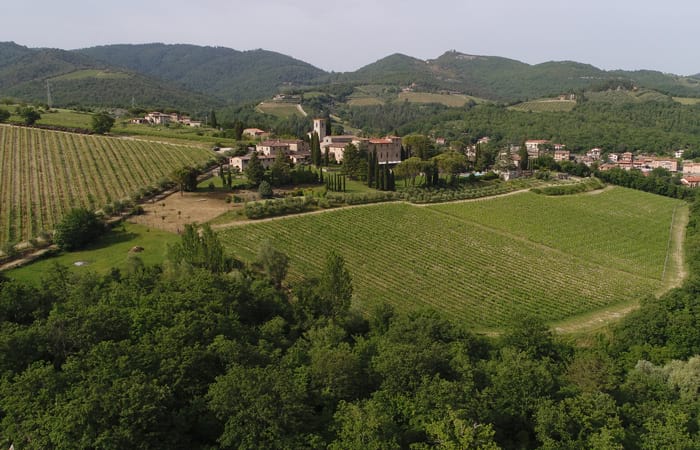
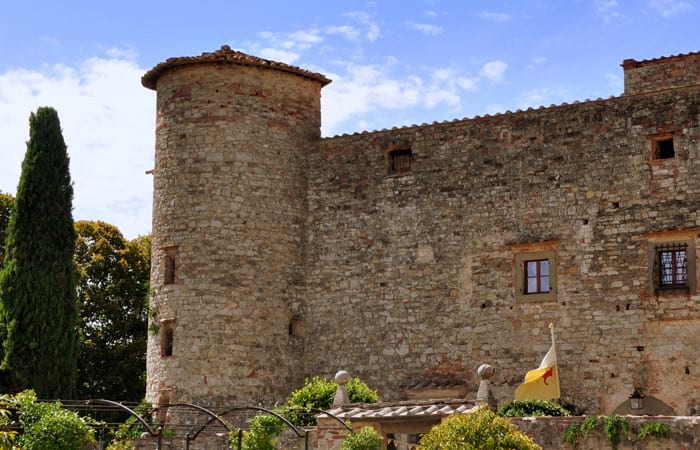
Magnificent castles around Gaiole
There are indeed many castles spread out in the countryside around Gaiole in Tuscany and several of them are also important in the wine production sector, such as Castello di Brolio (the Ricasoli family), Castello di Ama, and Castello di Meleto. Another castle to pay also a visit to for the history enthusiast is Castello di Monteluco that was often involved in many conflicts between Florence and Siena.
Let’s Talk Wine in Gaiole in Chianti
Gaiole is well-known for its local excellence when it comes to the production of olive oil, cured meats, and wine. It is a sub-zone of Chianti Classico with its own distinct terroir and characteristics just like Castellina, Panzano, Radda, Montefioralle and other of the nine subzones of the consortium.
What does it mean to talk about zoning and sub-ones within the Chianti Classico?
In Burgundy style, it is a way to acknowledge the differences in terroir between the various areas in Chianti Classico. The wines are different because the soil, microclimate, and conditions are not identical in the nine sub-districts. If we take Gaiole, it is a sub-zone with, in turn, many secondary sub-zones within its territory such as tuff (rock) close to Rentennano and sandstone in Monti in Chianti.
In 2017, the association of vine growers in Gaiole was founded with the aim of favoring and promoting the wine producers of Gaiole,
the specific soil types in the area, and the long and very important history of the Gaiole district. Just as in the other sub-associations within the appellation, the idea has been to work together to strengthen the typical traits of the local territory.
As you might remember from a previous article, Chianti Classico is one of the most important appellations – DOCG – in Tuscany. Chianti Classico represents the classical Chianti area of the Lega del Chianti in the Middle Ages. As an appellation, it became a DOCG in 1984 and an autonomous appellation and consortium (autonomous from the Chianti appellation) in 1996.
Ask us at Tuscany Destinations to help you design your own customized wine tour for your Tuscan vacation with a mix of larger and smaller wineries. As mentioned above, many of the historical castles in the area belong to important wine producing families. Therefore, you can do a combined cultural, history, and wine tour around Gaiole.
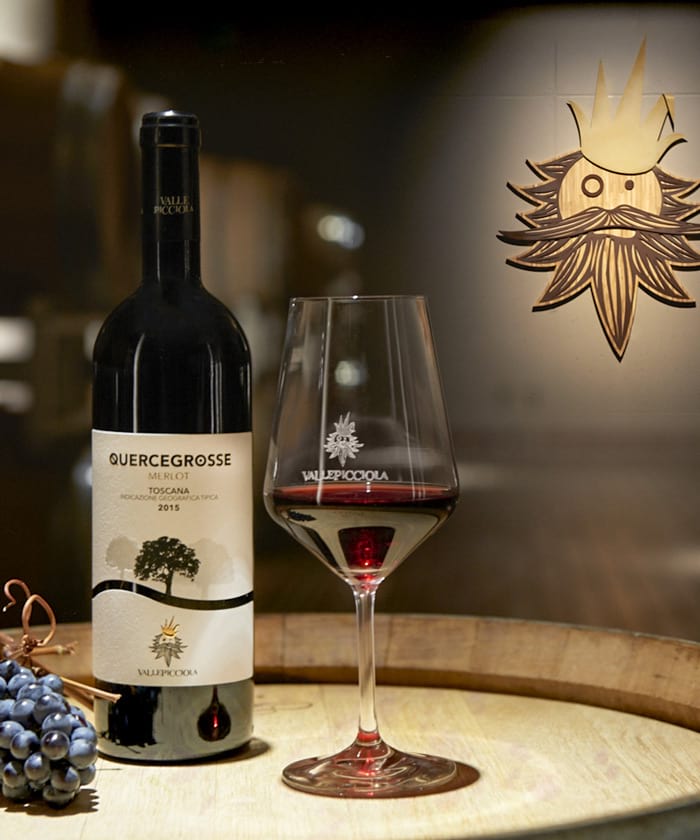
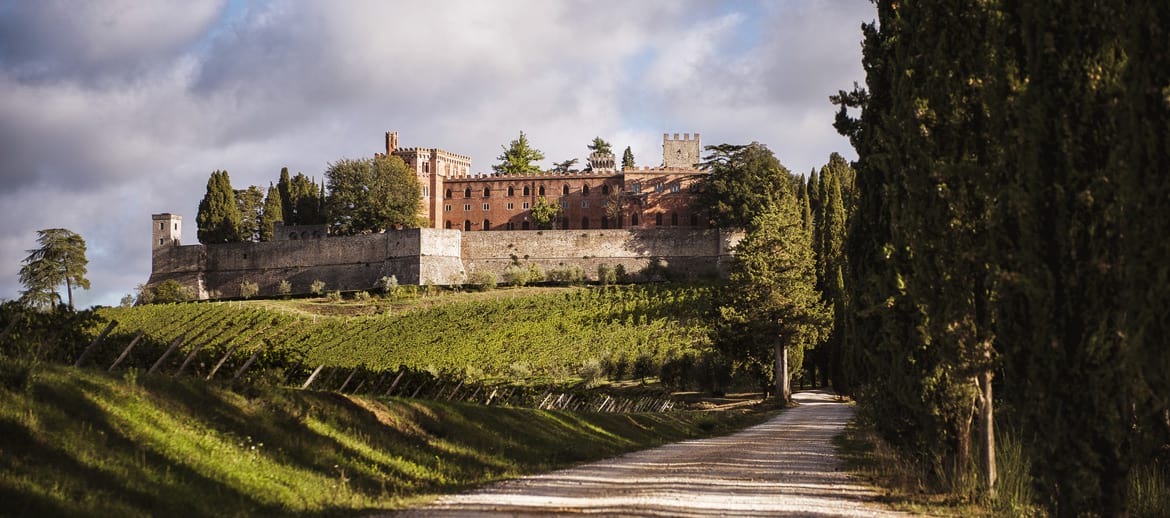
‘Castello del Brolio’ – Perhaps one of the foremost wineries in the ‘Chianti Classico’ area and with noble associations, the Ricasoli Family, that date back to the era of Charlemagne and linked to wine since the 12th Century. The current, Baron Francesco Ricasoli, maintains the traditions of his family and continuesto produce ‘Chianti Classico’ to the formula that hisillustrious ancestor, Baron Bettino Ricasoli determined in 1872. Then a formula for ‘Chianti Wine’ it is now known as ‘Chianti Classico’ after governmental decree in 1932. With special regard to the ‘Brolio Sangiovese’ cultivar, the current Baron, produces eight ‘Chianti Classicos’ alongside white wine, rosé, grappa and from the olives on the estate fine olive oil. The ‘Brolio Bettino Chianti Classico DOCG’ is of course an acknowledgement of his ancestor!
‘Capannelle’ – Deep in the heart of the ‘Chianti Classico’ just outside the market town of ‘Gaiole in Chianti’ is a transformation of a 16th Century farmhouse, which sits on top of the cellars and caves in which this winery’s red ambrosia is stored, barriqued, matured and eventually bottled. ‘Capannelle’ wines are to be found worldwide adorning the tables of the best restaurants. Along with the ‘Chianti Classico’ and a ‘Chianti Classico Reserva’, ‘Capannelle’ also produces several notable IGT’s including ‘Solare’ a blend of the ubiquitous Sangiovese grape of this region and Malvasia Nera producing a smooth elegant, rich wine with raspberry, cherry and tobacco notes. Well worth a trip just to sample the wine in the beautiful ‘English’ garden and ‘drink in’ the ambience. ‘Capannelle’ also produces rosé, Chardonnay, sparkling wines and grappa!
Eroica – A different experience in Gaiole
Eroica is a yearly cycling race that starts and finishes in Gaiole in Chianti. For those of you who like to be outdoors in nature, cycling, and to experience the Tuscan landscape in a different way along the gravel roads – Strade Bianche – in Tuscany; this is for you.
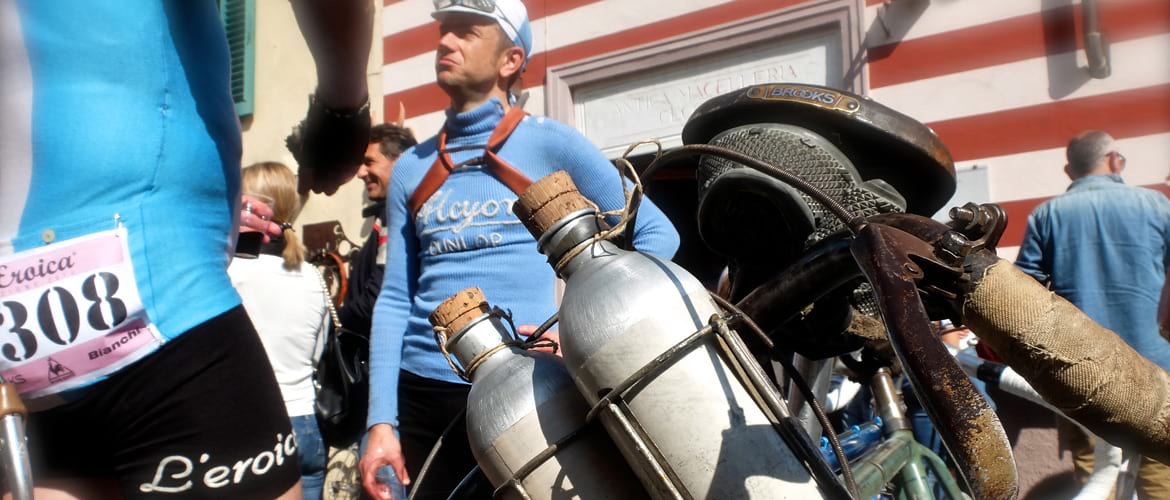
Eroica started out in 1997 in the province of Siena and has since then developed and become a well-known cycling race with up to 7,000 participants from all over the world. This is a fantastic way to not only experience nature up close but also to exposed to the vineyards and viticulture in the Chianti Classico area. The Consortium of Chianti Classico is actually one of the sponsors.
